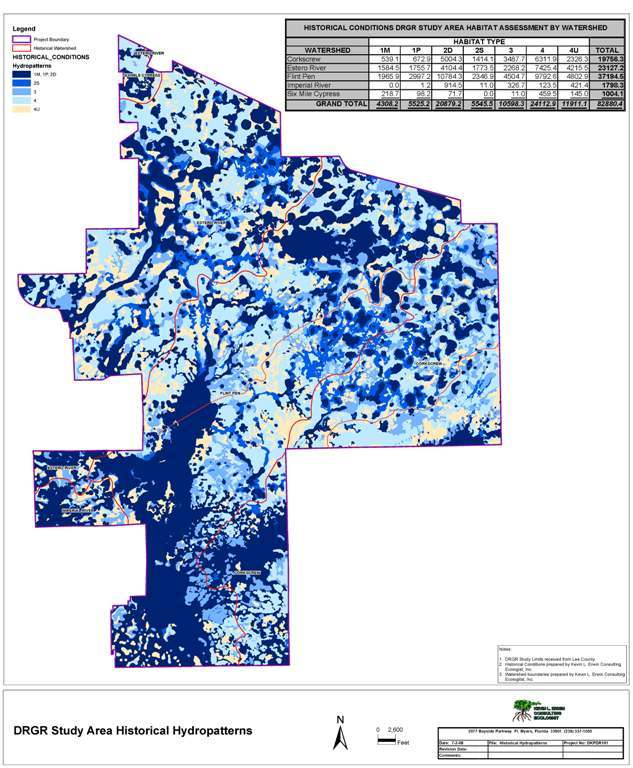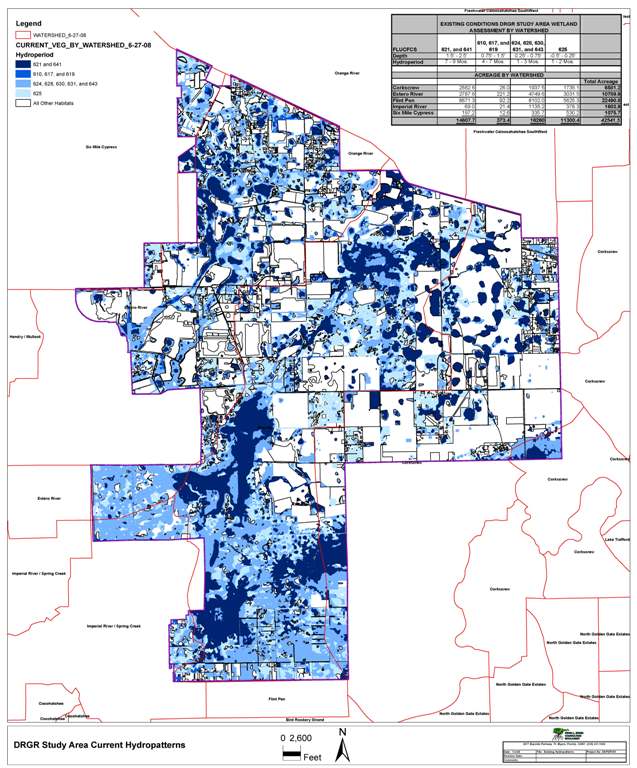The Density Reduction/Groundwater Resource (DR/GR) area includes approximately 83,000 acres of protected wetlands, conservation areas and agricultural lands. The area also includes a layer of limestone that is essential for aquifer storage and is also in high demand for roads and building construction. The area was designated by Lee County in 1990 to protect the county’s shallow aquifers and to comply with state requirements that the county reduce its population capacity in this area. These lands provide an important buffer between developed urban lands to the north and Corkscrew Swamp and other environmental preserves to the southeast.
Recognizing the need to provide better guidance on the appropriate location for agricultural, mining, residential and conservation land uses, in 2003 the Lee County Smart Growth Committee recommended a review of policies for the area. In 2007, the Commission initiated a 14-point Action Plan on DR/GR planning matters including critical mining, traffic and land use issues, and commissioned Dover, Kohl & Partners to develop a plan for the area. In late 2007 Dover, Kohl and Partners contracted KECE to develop an ecological model and natural resource strategies for the 83,000 acre DR/GR in southeast Lee County, completed in August 2009.
KECE designed and implemented a strategy for preparing an ecological model that would represent historic, pre-development conditions, existing conditions and future land use scenarios based upon multiple land-use designations. Within eight months the simultaneously tracked mapping of the entire area on 1953 and 2007 aerial photographs was completed and evaluated using KECE programmed ArcGIS and digital scanning functions. One of the goals of the KECE methodology was to provide a macro-hydrological conditions model of existing and historic hydro-patterns to illustrate changes in the location and quantities of surface water over time. KECE developed a “bridge” to correlate habitats mapped with hydrological characteristics using modified MikeShe codes.
The resulting KECE ecological models showed a 40% reduction of wetlands in the DR/GR from 1953 to 2007 with significant changes in the hydro-ecological characteristics of the remaining wetlands. The methods applied by KECE now provide the model with much improved calibration and accuracy. KECE developed a future land use scenario based on their ecological model that identifies and prioritizes future wetland restoration areas. KECE provided additional recommendations to Dover, Kohl and Lee County for future monitoring within the DR/GR that will not only improve model calibration and outputs but will also provide much needed information on base flows and levels.
Based upon this work by KECE and the Dover Kohl team, the Lee County Board of County Commissioners forwarded the Comprehensive Plan Amendment to the Florida Department of Community Affairs for review. The plan amendment includes designating a small area for continued aggregate mining and designating the vast majority of the remaining area for preservation and restoration through the use of Transfer of Development Rights. The mining area is concentrated in the Alico Road corridor. The priority restoration areas were identified with an emphasis on restoring water resources with potential to restore native habitats and flowways based upon the ecological model. The Lee County Board of County Commissioners voted unanimously to approve the amendments to the Lee County Comprehensive Plan at the final adoption hearing in March 2010.
Project Documents:
- Technical Ecological Report, by Kevin L. Erwin Consulting Ecologist, Inc., 2008
- Prospects for Southeast Lee County, by Dover, Kohl & Partners Team, 2008
- Natural Resource Strategies for Southeast Lee County, by Dover, Kohl & Partners Team, 2009
- Transferable Development Rights in Southeast Lee County, by Dover, Kohl & Partners Team, 2009
- Proposed Lee Plan Amendments for Southeast Lee County, by Dover, Kohl & Partners Team, 2009
Project Team:
- Dover, Kohl & Partners – Town Planning
- Spikowski Planning Associates
- Kevin L. Erwin Consulting Ecologist, Inc.
- James C. Nicholas, Ph.D.
- SDI Environmental Services, Inc.

